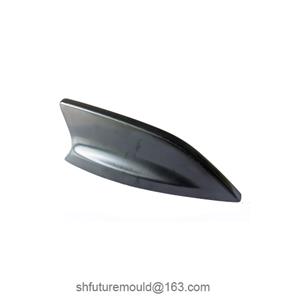What are the common problems in the overmolding injection molding process?
Overmolding injection molding is a molding process in which one material is injected and covers another material. In this process, the common problems are as follows:
1. Uneven overmolding
Cause analysis
Unreasonable injection process parameters: Improper setting of parameters such as injection speed, pressure, and temperature can lead to uneven flow of the overmolding material. For example, too fast injection speed may cause the overmolding material to jet and cannot evenly wrap the substrate; too low temperature will make the material's fluidity worse and it is difficult to fill every corner of the substrate.
Mold design defects: Unreasonable location, quantity, and shape of the gate will affect the flow path of the overmolding material. For example, improper gate location may cause the overmolding material to flow a long distance in the mold, resulting in insufficient overmolding at the far end; poor mold venting will also cause the overmolding material to be blocked by gas during filling, resulting in uneven overmolding.
Influence of substrate shape and size: If the substrate has a complex shape with structures such as deep holes, thin walls, and undercuts, the overmolding material is prone to uneven flow during the flow process. At the same time, the dimensional accuracy of the substrate will also affect the overmolding effect. Excessive dimensional deviation may lead to inconsistent thickness of the overmolding material.
Solution measures:
Optimize injection process parameters: Through mold testing and process adjustment, find appropriate injection speed, pressure, and temperature. Generally speaking, using an appropriate multi-stage injection speed, filling at a lower speed first and then accelerating filling can improve the flow uniformity of the overmolding material; adjust the appropriate temperature according to the characteristics of the material to ensure good fluidity of the material.
Improve mold design: Reasonably design the gate location and shape to make the overmolding material evenly distributed around the substrate as much as possible. For example, for substrates with complex shapes, a multi-point gate method can be used; at the same time, ensure that the mold has a good exhaust system, such as opening exhaust grooves on the mold or using breathable steel materials to exhaust the air in the mold.
Control substrate quality: In the substrate production process, strictly control its shape and dimensional accuracy. For substrates with complex shapes, consider appropriately modifying their designs to simplify the structure to facilitate overmolding; perform dimensional inspections on the substrate before injection and remove substrates with excessive dimensional deviations.
2. Shrinkage or bubbles
Cause analysis
Uneven cooling: During the cooling process of the overmolding material, if the cooling speed is inconsistent, it is easy to produce shrinkage differences, resulting in shrinkage. For example, the part close to the mold cooling channel cools quickly and shrinks greatly; while the part far from the cooling channel cools slowly and shrinks little, resulting in a surface depression. At the same time, if gas is trapped inside the overmolding material during the cooling process, bubbles will form.
Insufficient holding pressure: Insufficient pressure or too short holding time in the holding pressure stage will make the overmolding material not get enough supplement during the cooling and shrinking process, resulting in shrinkage. When the overmolding material starts to cool and solidify from the gate of the mold, and the internal melt is not completely solidified, if there is not enough pressure to supplement the melt to the shrinking part, voids or shrinkage will occur.
Solution measures
Optimize the cooling system: Reasonably design the cooling channels of the mold to make the overmolding material cool evenly. The layout of the cooling channels can be optimized through simulation software to ensure the uniform flow of the cooling medium (such as water) in the mold; and adjust the cooling speed according to the characteristics of the material to avoid too fast or too slow cooling.
Adjust the holding pressure parameters: Appropriate increase the holding pressure and holding time to ensure that the overmolding material has enough melt supplement during the cooling and shrinking process. Determine appropriate holding pressure parameters through mold testing. Generally speaking, the holding pressure can be adjusted according to the shrinkage rate of the material and product requirements, and the holding time should consider factors such as the solidification time of the overmolding material and the product size.
3. Appearance defects
Cause analysis
Material problems: Poor quality of the overmolding material itself, such as containing impurities, uneven color, etc., will affect the appearance of the product. In addition, the fluidity and stability of the material will also affect the appearance. Poor fluidity may lead to an uneven surface, and poor stability may cause discoloration during the injection molding process.
Mold problems: The surface finish, wear condition, and clamping accuracy of the mold will all affect the appearance of the product. If there are scratches, corrosion, and other defects on the mold surface, corresponding marks will appear on the surface of the overmolded product; poor clamping accuracy will lead to appearance problems such as flashes and burrs on the product.
Solution measures
Material quality control: Select a reliable overmolding material supplier and conduct strict incoming inspection on the material, checking indicators such as material purity and color. At the same time, according to the appearance requirements of the product, select materials with good fluidity and stability, and control the processing conditions of the material during injection molding.
Mold maintenance and precision control: Regularly maintain and maintain the mold to keep the surface of the mold smooth. Processes such as polishing can be used to treat scratches and corrosion on the mold surface, and regularly check the clamping accuracy of the mold and adjust parameters such as the clamping force of the mold to avoid appearance defects such as flash and burrs.




